Artifact 5
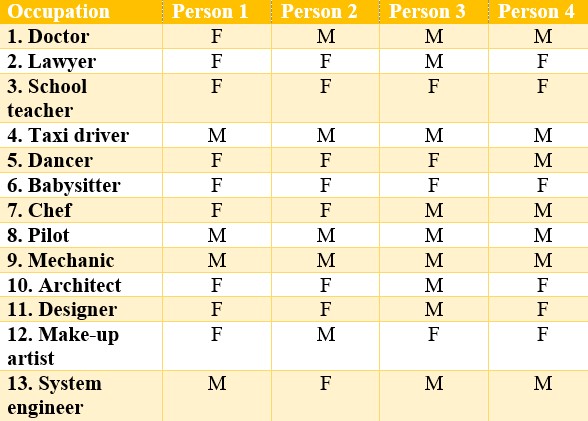
My Survey’s Results
My visual representation for this activity is the results of my survey. I chose to include this picture to give viewers a reference to what I am talking about. For this assignment, I surveyed four persons including myself who all have similar cultures. All the participants are from different age groups, thus there is a possibility of generational differences impacting the results. There were some consistencies where all participants said “M” for the occupation of a taxi driver. However, most of the responses were inconsistent among participants. Besides culture, there are other influential factors such as geographic location (which sometimes determines available jobs) and media (television, news, radio, social media, etc.). For example, three out of four participants said “F” for architect. This result could be based on where the participants live or perhaps, they know women in this industry. Or maybe they grew up watching shows depicting women architects such as Wendy from Bob The Builder, as an example. I learned from this assignment that people who have similar cultural backgrounds, can differ in beliefs such as the participants in this activity.
Artifact 4
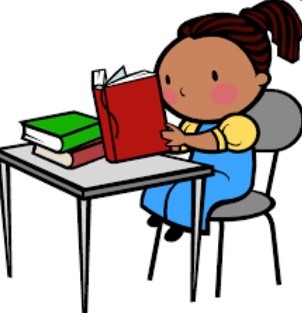
Photo Credits: https://pixy.org/1556976/
The picture selected represents my body language in the morning, noon, night, and sometimes in my sleep. My head is usually in a textbook, watching lecture videos, or completing assignments. My key takeaway from Amy Cuddy’s Ted Talk is that moods and feelings have an influence on my body language. The same thing can be said in reverse: body language impacts feelings and moods. I also liked how Cuddy used the popular phrase “Fake it until you make it”, and placed her own personal spin to it. Ultimately altering the phrase to become “Fake it until you become it.” I also like her suggestion that power moves can make someone feel more confident, which was supported with evidence. Two points that stood out to me from the video and textbook are that nonverbal communication can be effortlessly used and easily misinterpreted. Also, that nonverbal communication or lack of, can create feelings of uncertainty, awkwardness, and anxiousness. I learned from this activity that body language is vital to communication. Body language can relay our true feelings when our words say otherwise.
Artifact 3
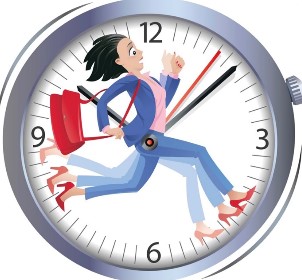
Photo Credits: https://rpmdaily.net/blog/running-out-of-time
The reason why I chose this particular visual representation is because I feel like time goes by extremely fast. Since time flies by fast, I rather spend time with people who I have a great connection and time with. I rather spend my time feeling stress free and being in a pleasant mood. Also, I rather spend my time caring about things that I am passionate about. I try to maintain a positive outlook on life because time goes by so fast. In this exercise, I pretended that I had a set appointment with each of the following target persons in the chart. I wrote down the minutes that I am willing to wait for that specific person if they did not appear on time.

Did I find any differences in the results? Yes, I saw differences in my responses. My results were based on which person I am waiting for. From this activity, I learned that I tend to wait longer for people who I deeply care about and have a great relationship with such as my parents and sibling.
Artifact 2
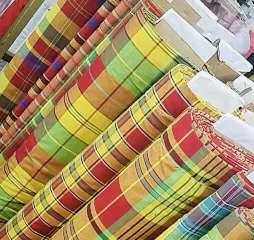
Madras Fabrics
For this assignment, I chose an object that represented an aspect of my culture. The object I chose to showcase as my artifact and visual representation is called madras. I selected this picture because madras is a part of my Caribbean culture because it is a staple fabric in many Caribbean island nations. It is also the traditional cultural wear fabric for some islands. Madras can come in numerous colors and countless patterns. This fabric is used for decorating interiors, and is notably used for tops, bottoms, headwraps, dresses, and cultural costumes. As the official fabric of the Virgin Islands, madras can be worn for special occasions, festivals, celebrations, and even for formal attire! Madras plays a huge cultural significance, as it was worn by our ancestors who then passed on this tradition. I am reminded from this activity that culture is special and unique. I learned from this assignment that people express their cultural identities differently. Though some may not be, I am proud of my culture.
Artifact 1
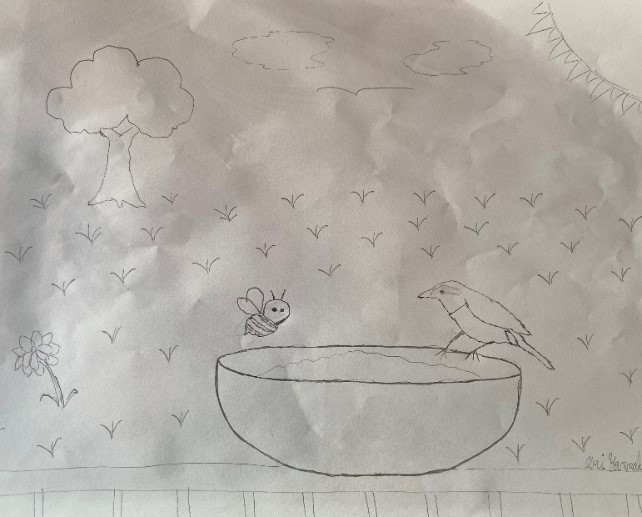
A Childhood Memory
There are many childhood experiences that have shaped the person I am today. Some experiences taught me life lessons and values, while some opened my eyes to see a bigger picture. This is my favorite top artifact because this illustration shown here is one of my fondest memories with my grandmother. The focus of the picture is the honey bee and bird. Some of the birds that came to the bird feeder were: the yellow breasts, hummingbirds, and thrashers. My grandmother made a DIY (do-it-yourself) birdfeeder which is represented by the bowl. Many creatures and insects would come to this bird feeder to eat its sweet content which was brown sugar. I chose this visual representation because it is valuable to me for three reasons. First, I enjoyed spending time with my grandmother as she was someone who has had a positive impact on my life. Secondly, this scene from my life, launched my curiosity and love for all things in nature. I became extremely fascinated with nature, from learning about flowers to uncovering insects. Thirdly, as I reflect, this was one of the moments I learned about diversity which is an individual value that I believe in. Although it was a bird feeder, many non-bird creatures had eaten from the bowl. The birds did not show any discrimination or ill feeling towards the other animals. The bees who came did not feel threatened otherwise they may have stung the other animals. This prompted me to think: If animals from different species could get along, then humans should be able to or at least accept each other. From this assignment, I learned that everyday moments can become teachable life lessons.